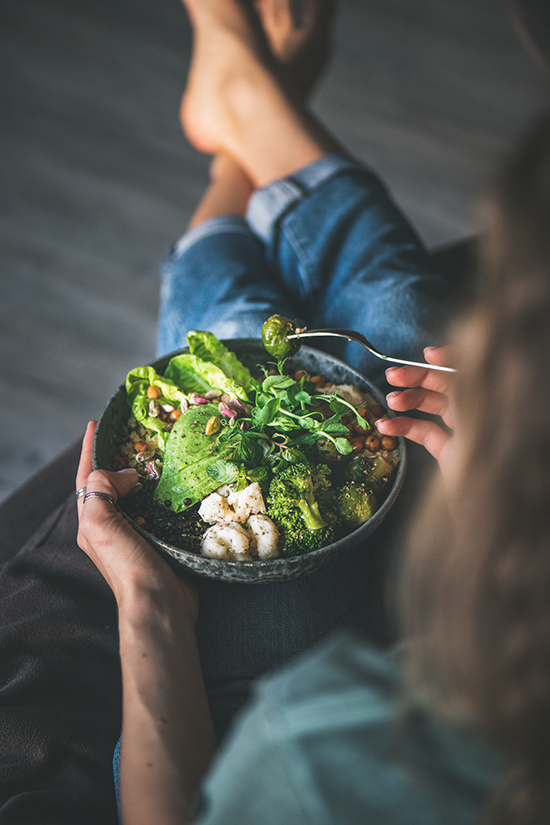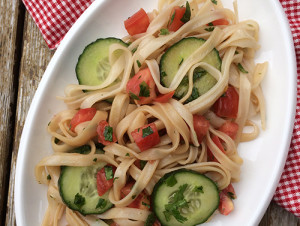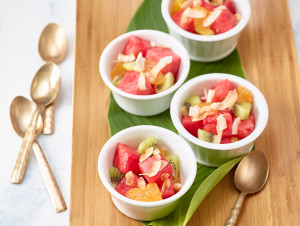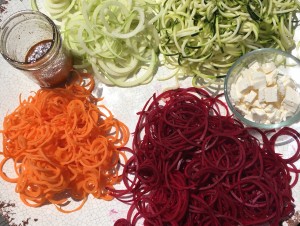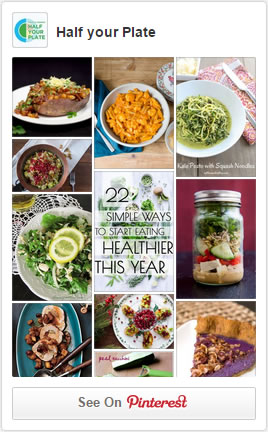Elevate Your Salad

Post written by Half Your Plate friend and RD Laurie Barker Jackman
Salads can be a great addition to a meal, bumping your veggie and fruit intake. But what about a salad as a meal solution? Depending on what you add to a salad, it can be a filling and nourishing dish. To make a salad a meal, simply follow the healthy plate – filling ½ your bowl with vegetables and fruit, ¼ with protein foods and ¼ with whole grains. The combinations of flavours and textures are endless!
Start with Vegetables and Fruit
Remember we want to fill half our plate with vegetables and fruits at every meal and snack. Salads are a great meal to make this happen! Vegetables and fruits are rich in fiber, vitamins, minerals and antioxidants. The choices are up to you, start with what you have in your fridge and think about what is in season.
- Greens are a staple in salads. Be sure to mix them up. You can add spicy arugula or crunchy romaine hearts.
- Add raw veggies that you love or change the flavour by roasting them! Roasted sweet potato or cauliflower are delicious additions to salads. This is also a great way to use up leftovers.
- Be sure to add fruit to your salad for a delicious sweetness. Berries, orange segments or chopped apples always taste great.
Add Whole Grains
Whole grains in your salad add more fiber and energy to keep you full longer. You can use leftover grains you may have on hand or cook a batch and cool before adding to your salad.
- Add a familiar whole grain like brown or wild rice.
- Quinoa or bulgur always taste great in a salad.
- Feeling adventurous? There are so many whole grains to try! How about cooking up some farro for your next salad?
Top with Protein
Adding protein to your salad will help keep you full longer. There are so many options to choose from. Be sure to mix it up.
- Plant-based options are great additions to salads. Canned beans or lentils can be used, simply rinse and drain them before adding.
- Boil some eggs at the beginning of the week for a quick protein option to add to meals.
- Canned tuna or salmon are a convenient way to add protein and important nutrients.
- Use up your leftover cooked chicken or beef from the night before.
- Add some crunch to your salad with the addition of some nuts or seeds.
Dress it Up!
One last point on salad dressing. Try making your own! Dressing can be a great way to add healthy fats and help you absorb fat soluble vitamins.
- A basic formula for a vinaigrette is 3:1 oil to acid ratio.
- Good acid choices are red or white wine vinegar, cider vinegar, balsamic, rice wine vinegar, lemon or lime juice.
- You can use flavourful oils like walnut, flax, or grapeseed, but olive oil always works.
- Mustards or honey can help emulsify the vinaigrette.
- Add fresh or dried herbs for flavour.
You can see that salads can help boost your intake of nutritious foods, are a great way to avoid food waste by using leftovers, and can add variety to your meal routine. Here are some great combinations from halfyourplate.ca:
Roasted Potato and Radish Salad
Mediterranean Orzo and Vegetable Salad
What is your favourite salad combination?






